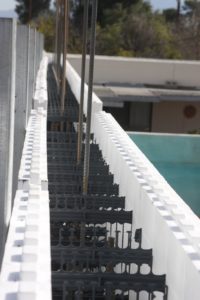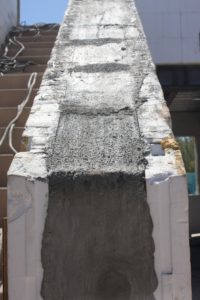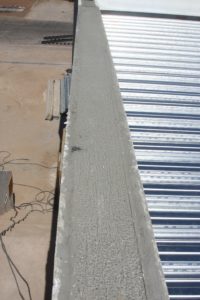Barrier Technology
When we look at our existing walls in our sound rooms, whatever the type of room we are in, we need to keep in mind that we are dealing with two very different processes. We have to keep the sound that is coming from sources outside our room, outside where it belongs. We also need to keep the energy created within our room, inside our room where it belongs. We use barrier technology to keep energy out of our room. We use sound absorptive technology to manage the excess sound energy within our room.
Reflection Vs Absorption
Only three things can happen to sound. It can be absorbed, reflected, or diffused. It is sound reflection that we are concerned about with any barrier technology which is the term for the technology to keep sound out of our rooms. Mass in our structure reflects sound energy back to the source it came from with our barrier technology. Mass through weight increase will help us to produce a surface that will reflect sound back to its source, so that it will not enter our room where we only want to deal with the energy we produce within the room.
Mass Is Friendly
Mass is our best friend when it comes to barrier technology. Mass can take many forms. It can be drywall, plywood, concrete, or even lead. Density or the weight of any material per square foot is the number we need to look at. The higher the number or the greater the density will give us isolation properties against sound energy of all frequencies. The lower the frequency, the greater the mass we will need to stop it from entering our room. If your studio is next to a highway, drywall will not stop the traffic energy from entering your room.
Air Is Good Barrier
Air is also a good barrier element. If we take two walls of a certain density and add an air space between the two walls, we can keep more energy out. A 4″ air space is the minimum. A six inch air space between two walls is a better starting point. We also need to make the mass of each one of our two walls different in order to alter the vibrational signature of each wall to keep the vibration transmission of sound energy “confused”. Placing insulation type material in the air space between the walls will also increase the sound transmission loss by reducing internal wall resonances.
Staggered Studs
If we use staggered studs to support our walls, we can gain another advantage. Staggering the studs breaks up the vibrational paths that the energy can take. If sound energy from the outside of our room strikes our barrier, it is changed from acoustic energy to mechanical vibrational energy. By staggering the studs, we keep the vibrational path ways uneven in position and placement and this unevenness will disrupt the vibrational energy flow’s pathways.
Resilient Strips
Resilient strips follow this similar thinking. A resilient strip is another way to alter the vibrational pathways and create a new barrier asset. If we use another layer of drywall to attach to an existing layer, we can use a resilient strip to place between each layer of drywall. A resilient strip will attach itself to one wall and then the other. The strip will also add a small layer of air between each layer of drywall. The combination of the resilient strip and the additional air space will establish another multiple layer of defense from vibrational assault.
Wall Cavity
Inside our dual wall cavity there will be an air space separating each wall. Each air space has a length, width, and height. It is a small room by itself. It will produce the same sonic issues as a regular size room only on a smaller proportion. We will have to deal with those issues accordingly. If we fill the space with sound absorbing technology, we can control those issues. Our goal is to create a wall that keeps unwanted sound energy out. Our goal is not to produce another sound generating source, especially one the size of a wall.
Acoustical Sealant
Sound can leak through any opening in our structure. Sound energy is like water. It will find the smallest opening to enter and come through. All edges of our material that touch another surface must be caulked or sealed. The proper sealant must be used. It must dry when applied but not dry completely, It must be pliable so that expansion and contraction of our wall surfaces can be allowed to occur without breaking the seal surface to surface contact. There are many quality acoustical sealants available for this important task.
Doors And Windows
Doors and windows must be given the same care and attention as our walls. Just as we used double walls with airspace between them to increase our STC or sound transmission loss number, we must use double and triple pane windows to isolate our sound energy. Laminated layers of glass will go along way to reduce the vibrational energy that sound energy generates. Laminated glass is the same glass we have in our windshields. Each layer of glass is separated by a layer of plastic. Our doors must be solid and be sealed correctly, so that no sound energy can leak in or out of our room.
Barrier / Sound Absorbing Technology
Mass and air space can assist us in our sound isolation efforts. It is the two working together that creates a good barrier combination. In order to determine how much density and what type materials we need to use, we need to know how much noise we are dealing with from the outside and how much energy we will produce on the room inside. We need to also keep in mind that any energy generated within the room that leaves the room will be reflected back into the room by our barrier technology. Care must be taken inside the room with sound absorbing technologies to minimize any energy leaving the room and striking our barrier shell.








